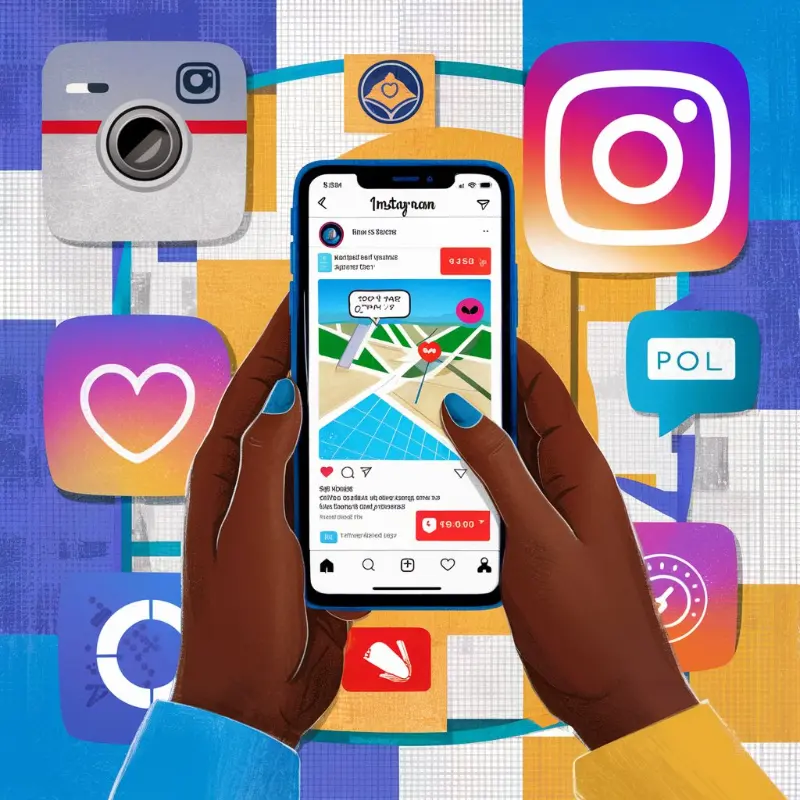How Instanavigation is Changing the Way We Navigate Digital Spaces

People want speed. They want answers now. They don’t want to click ten times to get one result. Instanavigation is Changing the Way answers that demand. It’s not a product. It’s a method. A smarter, faster way to move through content, data, and platforms.
Think about how you use apps or websites. Scroll. Click. Wait. Click again. Then scroll more. Instanavigation removes the waiting. It puts everything where you need it—when you need it.
Here’s what that means.
What Is Instanavigation?
It’s direct. It removes extra steps.Instanavigation gives users immediate access to the section, tool, or content they want. Without loading delays. Without hunting through menus.
It works by:
- Pre-loading content
- Using predictive links
- Tracking behavior patterns
- Reducing server calls
- Minimizing redirects
It’s not one technology. It’s a user experience strategy. It’s used in:
- SaaS platforms
- Media websites
- Mobile apps
- Customer support portals
- Content hubs
The Problem With Traditional Navigation
Menus are too complex. Pages load too slowly. Users forget where they are.
These issues lead to:
- Drop-offs
- Frustration
- Low engagement
- Lost conversions
If your site or app is hard to use, people leave. They don’t wait.
Read this: InstaNavigation: The Ultimate Guide to Anonymous Instagram Story Viewing
Instanavigation Solves That
By:
- Reducing clicks to action
- Cutting load times
- Showing content based on past behavior
- Improving content hierarchy
- Highlighting key paths with smart UI cues
The result?
More time spent on site. Higher conversions. Better user satisfaction.
Who Is Using Instanavigation Now?
Large platforms. Fast-growing startups. Mobile-first companies.
Examples:
- News apps that pre-load next articles
- Streaming sites that predict what you want next
- Dashboards that rearrange based on use patterns
- Online learning tools that auto-jump to the next module
They’ve stopped waiting for the user to click.
They anticipate.
They remove the effort.
The Business Case
Data from Google shows that a 1-second delay in mobile load time decreases conversions by 20%.
Another study by PwC shows that 32% of users will leave a brand they love after one bad experience.
Instanavigation protects against both. It makes your product fast. Easy. Frictionless.
Building With Instanavigation In Mind
If you’re a product owner or developer, ask these:
- Where do most users drop off?
- How many clicks does it take to reach key content?
- What info does the user need before acting?
- Which elements load slowly?
- Can key actions be made visible sooner?
Fix those first.
Then:
- Use real-time behavior tracking
- Pre-load high-interest areas
- Remove dead-end pages
- Keep the interface lean
- Minimize modal windows
Designers, Pay Attention
Instanavigation is not about flashy design. It’s about placement. Flow. Priority.
Good UI supports good Instanavigation.
Things to do:
- Cut the number of navigation layers
- Make key actions visible at first glance
- Use hover previews and tooltips for detail
- Make transitions feel instant, not sluggish
- Test on mobile first
Design isn’t what it looks like. It’s how fast someone gets what they came for.
SEO and Instanavigation
Faster navigation helps SEO. Google favors speed and engagement. If users stay longer, bounce less, and interact more, your rankings improve.
Instanavigation supports:
- Lower bounce rates
- Higher average session durations
- Increased page views per session
These are strong SEO signals.
How To Measure Instanavigation Impact
Use tools like:
- Google Analytics (behavior flow, average session time)
- Hotjar or FullStory (click maps, scroll maps)
- Core Web Vitals (LCP, FID)
- Segment or Mixpanel (event tracking)
Look at:
- Path-to-action reduction
- Engagement increases
- Abandonment decreases
- Mobile session growth
Future of Digital Movement
Voice search. Gesture control. AR. Instanavigation will evolve with them. But the core idea stays the same: reduce steps. Increase clarity. Get to the point. Your users don’t want to browse. They want to act.
Are you ready?





